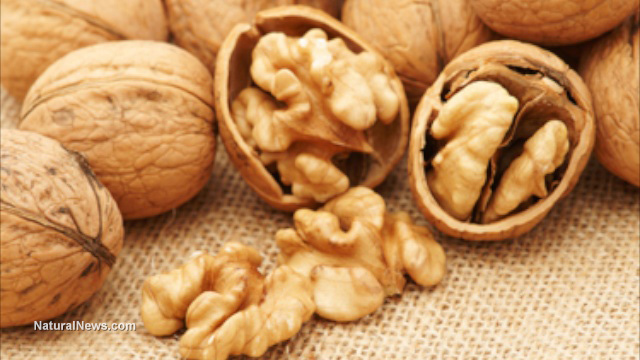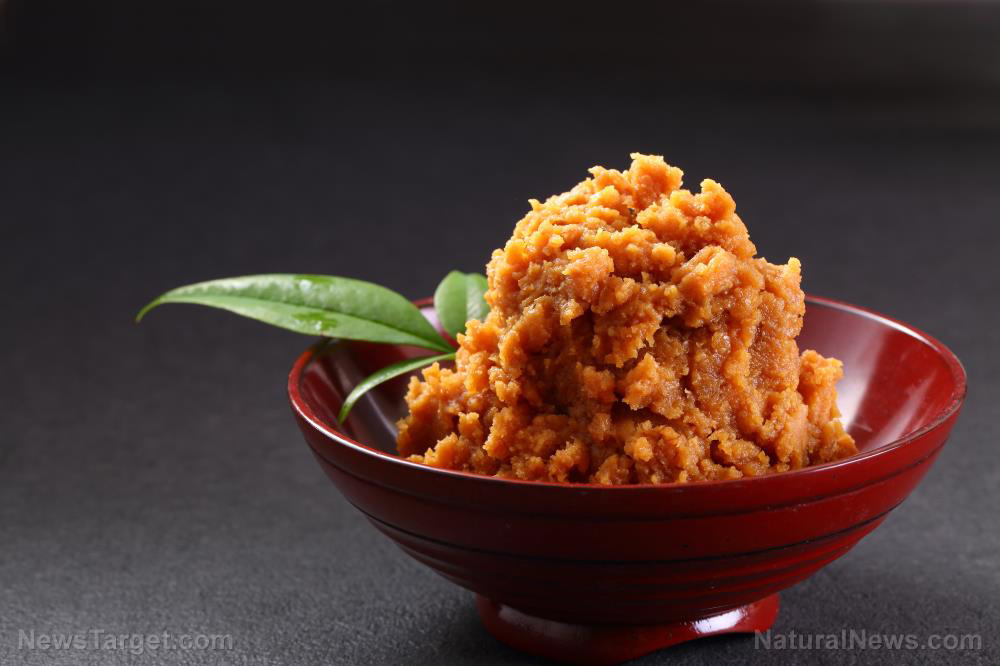 Parler
Parler Gab
Gab
Nothing could be more beautiful or poetic than when a healing food actually looks like the organ system it nourishes and heals in the body.
(Article republished from GreenMedInfo.com)
While commonly viewed as mere coincidence or an act of extraordinary randomness, it is difficult for me to acknowledge the exquisite design of the walnut, whose eerily skull-like shell encompasses the fatty-acid rich, bihemispheric "brain" of the nut, without opening myself to the possibility that mother nature wove metaphor, meaning, and a high degree of co-evolutionary non-arbitrariness into the natural order of things. Walnuts are well known to have a disproportionately higher amount of the very fatty acids, specifically the EPA/DHA omega 3 fatty acid substrate alpha linolenic acid that the brain requires for optimal health. Moreover, walnuts contain well-known neuroprotective compounds, such as gallic acid, vitamin E isomers, melatonin, folate, and polyphenols. Coincidence, or mother nature providing a clue so obvious we would have to be nuts (or nut deficient) in order to overlook it?
Or, consider the remarkable pomegranate fruit, prized the world over as a regenerative, fertility and prosperity enhancing food of deep cultural and mythological significance. Amazingly, pomegranate not only looks like the mammalian ovary but is literally the fruiting ovary of the pomegranate plant, and which produces some of the very same hormones (e.g. estrone and testosterone) that normally only animals produce, and which can even replace their function in the ovariectomy-induced experimental model of menopause.
In these examples, we see reflected a phenomenon once described as part of the "doctrine of signatures," a concept that goes back at least 500 years around the time of Parceleus (1491-1541), who stated: "Nature marks each growth ... according to its curative benefit." While this concept was sometimes taken too literally in the ancient world, with superficial resemblances between plants and human organs often being mistaken as having significant medical value, indubitably, there is still deep wisdom embedded in ancient medical texts, concepts, and practices.
At GreenMedInfo.com, we focus on supporting our intuitive faculties and direct experiences (the so-called N-of-1 which is the phenomological ground of all truth) in the realm of natural medicine with peer-reviewed scientific research, and this includes validating some of the more "poetical" concepts like the "doctrine of signatures" that the majority of modern medical professionals have left behind as "magical thinking", or were never exposed to in their training. I believe we are nearing a golden age of mutual validation, where the ancient and new worlds meet to confirm one another, ultimately amplifying the awareness that natural healing, and self-healing is the only sane path forward worth taking when it comes to, at least, non-emergency health care.
Pomegranate: The Ovary, Heart, And Blood Healing Food
Pomegranate is an exceptional example of a food that participates in the extraordinary doctrine of signatures, because it both resembles and heals multiple organ systems. Not only is it a plant ovary that supports, nourishes and heals the ovaries of animals, but it looks like a heart and "bleeds" an amazing, astringent juice that anyone who has tasted it knows leaves the mouth feeling exceptionally clean. The oral cavity happens to be lined with the very same epithelial tissue that lines the inside of the blood vessels (endothelium). The same cleansing effect, that you taste and feel in your mouth, also occurs in your arteries, which is why pomegranate has been clinically proven to reverse arterial plaque buildup within just months of consumption. Can you only imagine what would happen if the millions on statin drugs who are obtaining no cardiovascular benefits consumed pomegranate instead? If food were used as medicine we might actually accomplish a deceleration, and perhaps even regression, of the ever-expanding global heart disease epidemic.
Pomegranate's blood-like juice has been clinically studied to increase the health and vitality of our blood. A 2014 study published in the Journal of Applied Physiology, Nutrition and Metabolism titled, "Effects of pomegranate extract on blood flow and running time to exhaustion," found that acute ingestion of pomegranate extract 30 min before exercise enhanced vessel diameter and blood flow and delayed fatigue during exercise. The pomegranate group noted a significant increase in post-exertion vitality, as well.
I found this study particularly interesting because I have noticed after consuming pomegranate juice the same sensation of increased blood flow. I was not certain, until reading this study, if this was something I was imagining or if it was possible within one dose of pomegranate to experience significance differences in blood flow. Remarkably, another "blood-like" liquid, beet juice, has also been found to have significant blood supportive properties. In one recent study, a single dose of beet juice resulted in improved cognition within 90 minutes, and which researchers attributed to its ability to positively modulate the blood flow dynamics (haemodynamic response) in the frontal cortex. One of the mechanisms identified is the presence within beet juice of nitrates, which produce a blood vessel dilating effect.
For those looking for more information on the doctrine of signatures, the herbalist Mathew Wood provides salient insight in an article on the topic under the subheading "the Forces of Nature and the Creation of Signatures":
"Every plant represents a finely honed response to environmental stress - the exact same stress that human beings must contend with in order to stay healthy. The wide array of chemical compounds in the plant, as well as its shape, color and environmental niche all represent adaptations to stress. The plant has been molded in response to stress. There is no room for extra chemicals or colors or extravagant shapes. It is a survivor and what it can do for itself it can convey to us as a medicine. The philosopher Rudolf Steiner pointed out that the same forces which cause disease in the human frame cause the contortion of the plant. Thus, the "contortions" or shapes and colors, not to mention the environmental niche in which the plant lives, are "signatures" picturing the stresses and diseases to which plant is remedial. There is also a deeper lesson. The doctrine of signatures teaches us to view disease and remedy in a "characterological" sense, or as specific patterns or identity patterns formed in response to stress. Each possesses an inherent logic and intelligence all their own. These responses produce patterns or "signatures" which we must learn to read in plant and person alike."For an even deeper scientific explanation for how plants and animals co-evolved, learning how to survive and/or thrive together by developing certain phytochemical co-dependencies, read the remarkable article on the topic titled, "Xenohormesis: health benefits from an eon of plant stress response evolution."
Read more at: GreenMedInfo.com
The five best ways to beat a cold
By News Editors // Share
Israel responds to ICJ ruling to halt Rafah assault by massacring dozens
By News Editors // Share
The US submarine force is sunk
By News Editors // Share
Bannon: Conservative leaders lack ‘the f—ing balls’ to stop ‘cultural collapse of the West’
By News Editors // Share
Top five traditional, fermented anti-aging foods
By News Editors // Share
Governments continue to obscure COVID-19 vaccine data amid rising concerns over excess deaths
By patricklewis // Share
Tech giant Microsoft backs EXTINCTION with its support of carbon capture programs
By ramontomeydw // Share
Germany to resume arms exports to Israel despite repeated ceasefire violations
By isabelle // Share










